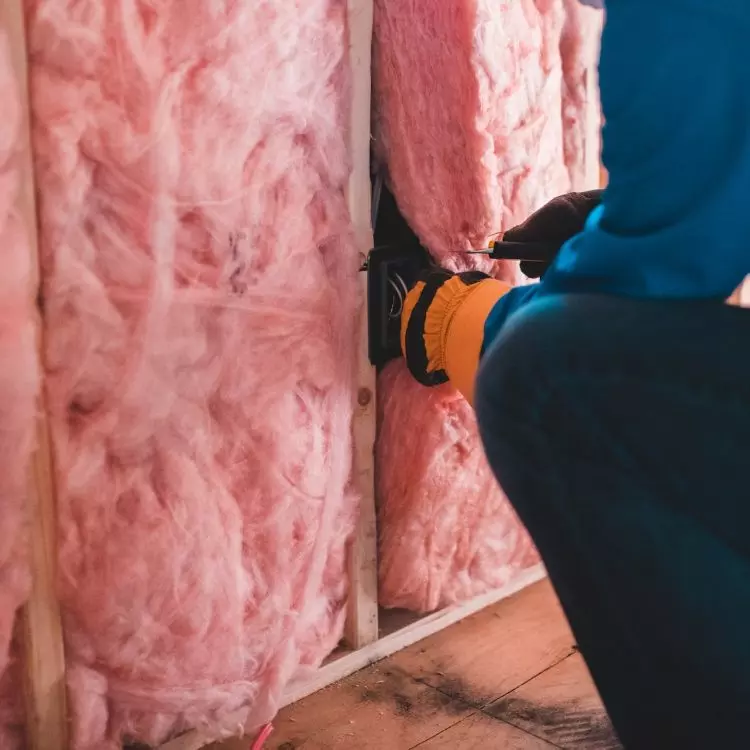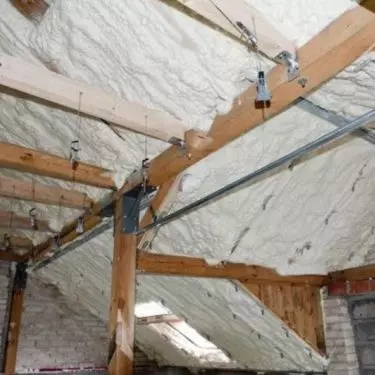Do you dream of a warm and quiet home? You will create it only by planning an optimal insulation system. The balance between thermal and acoustic insulation is extremely important, but not always easy to achieve. Fortunately, modern sealing materials increasingly combine both functions. How to plan a space where thermal comfort meets silence and energy savings? We have prepared some hints!
Thermal insulation - a pleasant temperature at any time of the year
When planning home installations, it quickly becomes clear that an efficient heating and heat maintenance system is important. Even if you are not building a passive house, you need to meet the increasingly stringent energy standards imposed on Poland by the European Union in 2021.
Above all, however, you want your home to have a pleasant temperature - at any time of the year. For this to happen, an efficient heating and cooling system should be backed by effective thermal insulation.
To keep your home at a pleasant temperature, you need to line the walls, roof and floor with a layer of insulating materials. Sometimes the question arises: which is more important? Thermal or acoustic insulation?
Photo by Thayran Melo © Unsplash
What do you need to know to plan thermal insulation well?
To keep your home at a pleasant temperature, you need to line the walls, roof and floors with a layer of thermal insulation material. The construction market offers many traditional and modern solutions. Knowing the coefficients you will find on the labels of insulation materials will help you make a good decision:
- thermal conductivity coefficient λ, which should be less than 0.04 W/mK,
-
thermal transmittance coefficient U, which informs about there how much heat flow escapes through the partition - it too should be as low as possible.
Let's try to look at the most popular materials for thermal insulation of buildings today!
Modern materials for thermal insulation - an overview
You need to know that the following categories are quite broad. However, we will focus on the most innovative solutions. You will also learn whether you always have to choose between thermal and acoustic insulation.
Styrofoam (or expanded polystyrene - EPS) and extruded polystyrene (XPS).
Styrofoam panels are formed by foaming polystyrene granules. They are lightweight, easy to transport and available in various thicknesses. They do not soak up moisture and are resistant to compression.
However, traditional polystyrene is brittle and sensitive to weather conditions. Also remember that it is not a recommended material for acoustic insulation!
Nowadays, there are improved versions of polystyrene foam on the insulation material market that are worth looking at. The Finnfoam Group offers extruded polystyrene, proven in the harsh conditions of the Scandinavian climate. The brand's polystyrene boards are refined using the extrusion method, which makes them distinguished by their uniform and closed cell structure. This technology translates into increased resistance and excellent thermal insulation properties.
Another option is high-density gray polystyrene, which has a very favorable thermal conductivity coefficient λ (<0.031 W/mK). Thanks to this property, gray Styrofoam board retains 30% more heat than white Styrofoam. Gray polystyrene is increasingly used for thermal insulation of buildings that meet high energy efficiency requirements.
Mineral wool
This is a material that is formed by defibering basalt rock or glass cullet. Wool adapts very easily to insulated surfaces, so it can be used where it is not possible to lay slabs. Unlike Styrofoam, it is resistant to fire - it does not melt or burn in high temperature conditions. The advantage of wool is also its ability to dampen sound.
One of the few drawbacks of mineral wool is its sensitivity to moisture. With prolonged contact with water, the material loses its thermal insulation properties
Traditional mineral wool has seen a number of modifications and improvements. An innovative version of this material is the so-called White Heat, which is a crafted form of mineral wool, applied by spray method to the surface requiring insulation. This is an excellent option for thrifty people who can't quietly look at the waste of purchased materials. Spray insulation eliminates the need to cut and fit mats or boards, so you can use exactly as much of the product as the surface to be insulated requires.
Mineral wool is a versatile insulation material that combines thermal and acoustic properties. It can also be used in spray form, which eliminates waste of purchased materials.
Photo: Erik Mclean © Unsplash
Insulation foams
They are formed by foaming polyester resin with the addition of foaming agents. They are characterized by a very favorable thermal conductivity coefficient ( λ 0.021-0.023 W/mK), they also have very good acoustic performance. Thermal insulation foams work well wherever there is a need for thin-film insulation, as well as in hard-to-reach places like roof folds and attics. They are also available in spray form.
Granules
The most popular granules in thermal insulation - expanded clay - is a lightweight ceramic aggregate with a porous structure. Expanded clay is formed from high-silica clay, fired at 1150°C. It is lightweight and has a high porosity. Thanks to its ability to retain air in the pores, it has very good thermal (and acoustic!) insulation properties. Resistant to moisture and fire, expanded clay has been widely used in insulating buildings. It can be used externally, as well as internally, and can be combined with other insulation materials.
Modern insulation membranes and films
This is a wide group of materials used in insulation, made with the latest technologies. Membranes and films are used in thin-layer thermal insulation and for surfaces with unusual shapes. This group can include aluminum foil and reflective films, whose main task is to regulate heat in roofs and attics. However, most of them do not have satisfactory acoustic properties.
Thermal insulation foams work well wherever there is a need for thin-film insulation and on hard-to-reach surfaces.
Photo Diffitto © FreeImages
Sound insulation - important for home comfort
A quiet home ensures that people can talk freely without having to shout at outside noises, but also without disturbing each other in separate rooms. The acoustic performance of the building depends largely on the building materials used: concrete slabs and solid brick will quiet the best, lightweight and modern expanded concrete blocks also work very well. When building a quiet house, you also need to keep in mind the windows, which are a natural gateway for sounds. Among the many options, you should opt for triple-glazed windows, with very good acoustic and thermal parameters.
If you want to further soundproof your home or interior spaces, insulating materials with high sound absorption capacity come to your aid.
A quiet house is one in which you don't have to shout out outside noises, but also can talk freely in individual rooms.
Photo : Bermix Studio © Unsplash
Soundproofing materials - what dampens sound best?
It is worth knowing that soft and fibrous materials have the best ability to dampen noise. That's why mineral wool is commonly used as acoustic insulation for exterior and interior walls. This is good news! If you have decided to insulate your home with wool, the material will perform both key insulating functions. If you want a more environmentally friendly solution, you can choose Steico wood fiber mats with similar properties. Natural wood fibers, thanks to their structure, will not only effectively insulate the interior, but also take care of its soundproofing.
But what about Styrofoam? Can it effectively protect against noise? There is acoustic polystyrene available on the market of insulation materials, which is obtained by special processing involving the weighting of panels. It is commonly used in the acoustic insulation of floating floors on ceilings, as it is good at damping sounds transmitted by vibrations of building surfaces. However, you must remember that Styrofoam for soundproofing walls is a bad idea - there are materials that are much better at minimizing airborne noise.
Let's sum up - insulation is the silent hero of your home. A well-thought-out insulation system makes winter less annoying and heating bills much lower. At the same time, modern insulation materials help protect the building and individual rooms from unwanted noise. Plan insulation early in the construction process to enjoy a warm and quiet interior for many years to come!
Are you building a house? We have more information on insulation for you!



































